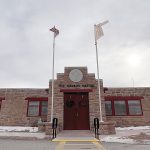
Clearing the air: why we support moving uranium mine waste to the Red Rock Landfill
By Edith Hood and Teracita Keyanna
Editor’s note: Teracita Keyanna and Edith Hood are members of the Red Water Pond Road Community Association. The community is 11 miles northeast of Churchrock, New Mexico.
A proposal to remove uranium mine waste from our community, the Red Water Pond Road community, 11 miles north of Churchrock in the Eastern Agency, to the Red Rock Landfill property five miles east of Thoreau, has generated some disagreements among members of the Navajo Nation. We are writing to give our community’s perspective and to help base the conversation on accurate information. We want to work together as one people to collaborate and figure out a plan to protect ourselves, our children, and our grandchildren.
Some of us had to move out of the community because our health has been impacted from living next to uranium mine waste for nearly 50 years. We believe, based on our observations and recent health studies, that chronic, long-term exposure to uranium mine waste from the Quivira/Kerr McGee Mine has led to respiratory problems, various cancers and other diseases and too many premature deaths. We miss our home and want to go back. This is where our umbilical cords are buried.
But when we look outside the front door to the east, there’s a giant pile of uranium waste. There’s another to the south, and yet a third just over the hill to the southeast. Our traditional cultural practices have been disrupted because of the contamination left behind by the uranium industry. We can’t pray the way we used to. We can’t gather herbs or teach our kids traditional cultural practices that come from our Mother Earth. Uranium mining and milling companies pitted communities against each other in pursuit of profits, and now the wastes they left behind are doing the same.
In Native communities like ours, the U.S. Environmental Protection Agency (EPA) usually remediates uranium mine waste by covering it in place. “Cap in place” involves putting uncontaminated soil on top of the mine waste, which is typically in piles above ground without liners between the ground and the waste to protect groundwater and seeding the soil with vegetation. This “solution” is not protective of public health over the long term because the soil cover always erodes over time due to exposure to wind, rain, and snow melt. The soil cover also is exposed to animals digging burrows, tunnels and holes, further accelerating soil cover erosion. Once the soil cover erodes, we are again exposed to the mine waste.
EPA has finally done the right thing in the Red Water Pond Road Community. They have listened to us and have come up with a proposal to remove the Quivira/Kerr McGee uranium mine waste from our community and to transport it by truck to the Red Rock landfill property operated by the Northwest New Mexico Regional Solid Waste Authority.
We support EPA’s proposal primarily because it will reduce our exposures to uranium mine wastes, thereby reducing health risks. The wastes would be placed in a state-of-the-art engineered facility at the landfill property in a location separate from the municipal solid waste disposal facility that has topography that minimizes erosion from the wind or rainfall. The waste would be placed in below-grade lined trenches, each with a leak detection system. When the mine waste disposal cells reach capacity, the waste will be covered with an engineered cover designed to last centuries. These engineering precautions, combined with natural geologic armoring of the property and a substantial depth to groundwater – 350 feet – will provide long-term isolation of the mine waste.
Most important, this plan would remove 1 million cubic yards of wastes from our community.
We want to make it clear that this uranium mine waste is not the same as high level radioactive waste or uranium mill tailings. This waste is dry dirt and rocks whose uranium has been mostly removed. It is considered a low risk to health when the exposure is short-term; health risks from uranium mine waste become significant with long-term exposure over many years.
We urge EPA to explore transportation routes that would avoid the trucks traveling through Thoreau to better protect community members there.
We are tired of dealing with uranium mine waste in our community. We’ve had to deal with it our entire lives across three generations. We are tired of seeing our family members passing away from cancers and respiratory diseases. We want to go back to our homeland, once it is fully remediated to residential standards. This is the best alternative at the moment.
We recognize there is a lack of consensus which has created conflict among our Diné communities. A public process of peacemaking and rational discourse among impacted community members is needed to develop Navajo policies for remediating mine wastes.
Now is the time for us to come together as one people to address this issue of uranium waste that has plagued our Diné communities since the first uranium ore was mined in Monument Valley in 1942.

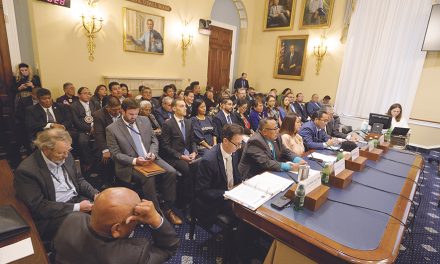
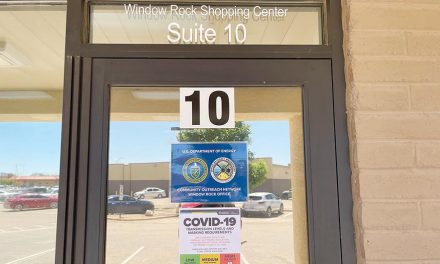
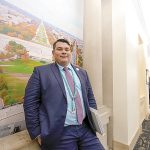
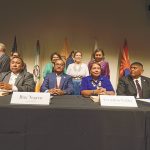

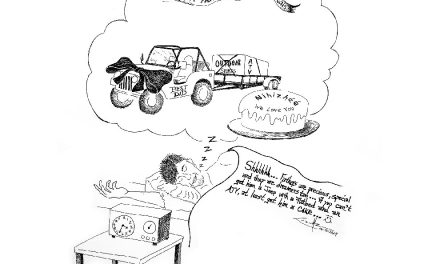


 Highway 264,
Highway 264, I-40, WB @ Winslow
I-40, WB @ Winslow